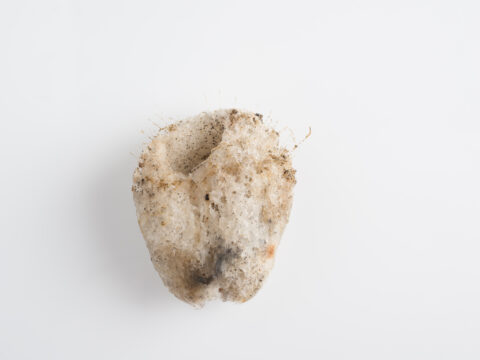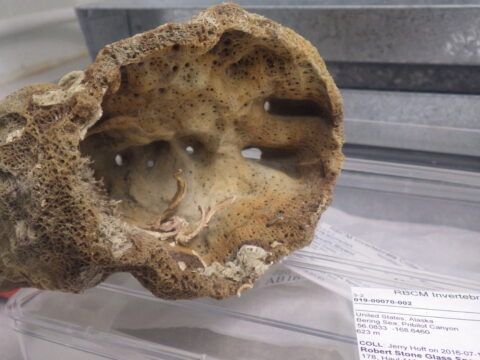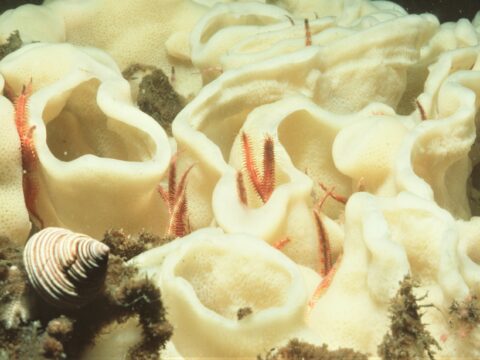Glass Sponges
What can you learn about the deep sea from glass sponge research at the Royal BC Museum?
In 1987, while doing a survey of the north coast of BC, scientists stumbled upon massive living glass sponge reefs on the sea floor. At the time, these reefs were thought to have been extinct since the Jurassic Period. Glass sponge reefs are deep-sea biodiversity hotspots. This incredible discovery, and the ongoing research surrounding it, has greatly increased what we know about the deep sea, biodiversity and the ecological impacts for both near and off shore species in BC.
What are glass sponges?
The scientific name for glass sponges is Hexactinellida (hex-act-in-ell-id-a). These sponges filter dissolved silica (glass) out of the water and use it to form spicules, which make up the skeleton of the sponge. When the sponge dies, juvenile sponges and sediment (sand and dirt) get caught up in the dead skeletons and a reef complex forms. The reefs found in BC cover more than 1000 square kilometres of the seafloor!
The three types of reef-building glass sponges in BC are the cloud sponge (Aphrocallistes vastus), the goblet sponge (Heterochone calyx), and Farrea occa, which doesn’t have a common name. The reefs these animals form also create habitat for other marine species, including juvenile rockfish. Some species of rockfish are commercially important and have become endangered.
Glass sponge reefs are very vulnerable ecosystems and many have been accidentally destroyed by the fishing industry. Because of this, scientists are working to ensure their protection. The best way for this to happen is through the designation of marine protected areas (MPAs).
Dive in to learn more about MPAs, glass sponges and the creatures that live on glass-sponge reefs.




